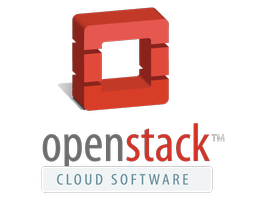The OpenStack conference in Boston last week was a great place to check out the status of the public cloud. Multiple providers were at the Intercontinental Hotel, each showcasing their unique approach to the public cloud. Rackspace was aggressively adding new features, with its usual commitment to customer first; HP was methodically moving its beta forward, with a focus on quality over time to market; and Dell was in the early stages of defining its public cloud, showcasing its commitment to OpenStack.
With only the first lap of the race for the public cloud behind us, I thought I’d weigh in on what I think it takes for a vendor to win in the public cloud.
Sense of Mission
Successful public cloud vendors will require a sense of mission, driven by the recognition of the unique opportunity that exists to transform an industry. Amazon set the standard here, with a messianic focus second to none. This clarity will need to exist at all levels and functions within an organization, innovating everything from services, features, pricing, and go to market models. Innovate or die is the mantra in the battle for the public cloud, and playing catch up in sure way to lose.
Autonomy
Most of the companies competing for the public cloud have multiple product lines, spanning hardware, software and services. A public cloud more than likely directly competes against one or more product lines - especially traditional server and storage product lines. One of the great corporate successes of HP in the 1980s was its decision to incubate its inkjet printer business unit outside its laser printing business, ensuring the success of what was then an emerging technology. The public cloud represents a disruptive innovation which will need independence to grow and thrive. In larger companies, this will require incubation with autonomy and P&L responsibility.
Software DNA
Most of the vendors in the game already have proven track records in designing and deploying hardware architectures for compute and storage. While the scaling of shared infrastructure is a complex problem, the secret sauce in the public cloud is in the software: the internal software to operate a cloud at scale, the customer facing software to allow customers to consume it, and the applications to deliver higher value innovation. The temptation of most vendors will be to seed their public cloud organizations from existing corporate DNA - e.g. services or hardware professionals. If your product managers, architects, and even sales people cannot get a comparable job in the AWS group at Amazon, you likely have the wrong people.
Real IaaS
IaaS is the bedrock of a public cloud. This does not mean PaaS will not play a role in our future, but it does mean that lack of a versatile and feature-rich IaaS offering will impair the success of a public cloud. The basic building blocks of an IaaS service are simple: compute with support for heterogeneous operating systems, durable block storage, highly durable object storage, image management, and basic application services (i.e. database, load balancing, monitoring). To win in the public cloud, vendors will need to bring to market competitive IaaS offerings.
Community
Successful vendors will develop and nurture a community around their public clouds. A community is critical to build the tools, software and knowledge required to enable broader adoption. Communities will typically drive the creation of critical bindings for different languages, and build the knowledge base (e.g. books, articles, blogs, forum discussions) that will be used by the subsequent waves who follow them into the cloud.
Applications
Once public cloud vendors achieve the basic building blocks - elastic compute, block storage, object storage, load balancers, databases - differentiation will be based on their ability to deliver new value-add services. The initial services will likely focus on value-add services on top of the IaaS compute and storage infrastructure, that can be used as higher level building blocks in applications (e.g. distributed memory caches, search, storage as a service). This is where vendors will achieve their greatest differentiation, as well as their largest margins.
